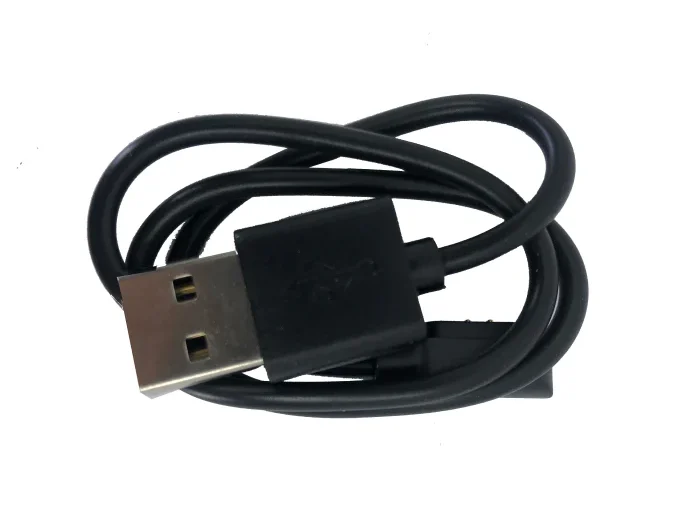Introduction
As smartwatches become more popular, finding the right charger for your device has become essential. Whether it’s an Apple Watch, Samsung Galaxy Watch, or another model, each smartwatch often requires a specific charger that meets its power requirements and physical design. In this guide, we’ll cover everything you need to know about watch chargers to ensure you pick one that’s compatible, efficient, and safe for your device.

Types of Watch Chargers
Smartwatch chargers come in a variety of types, each with unique characteristics. Magnetic chargers are among the most popular and provide a secure charging experience. These chargers often snap directly onto the back of your smartwatch, aligning the connection points for an efficient charge. Meanwhile, wireless chargers provide a cable-free experience, ideal for convenience but may charge more slowly. There are also USB chargers, which plug into laptops or power adapters, making them highly versatile. Choosing the right type of charger depends on your smartwatch model and lifestyle needs.
Understanding Compatibility with Smartwatches
One of the key factors when choosing a watch charger is compatibility. Many smartwatches require specific chargers with unique connection ports or voltage requirements. Apple Watches, for instance, work best with magnetic chargers designed exclusively by Apple, while other brands like Samsung also offer model-specific chargers. Trying to use an incompatible charger can lead to slow charging or even damage to your smartwatch. Always check the specifications and compatibility notes of both the charger and your smartwatch before purchasing.
Fast Charging vs. Regular Charging
Some watch chargers offer a fast charging feature, which can be incredibly convenient for users on the go. Fast chargers work by supplying a higher wattage to the battery, allowing it to fill up more quickly than with a regular charger. However, it’s important to verify that your smartwatch is compatible with fast charging, as older models may not support it. While fast charging saves time, it can also affect the longevity of your battery if overused, so it’s wise to balance speed with battery health.
Portability and Convenience
For individuals who frequently travel or are constantly on the move, a portable watch charger can be an excellent choice. These chargers are compact and often come with features like a foldable plug or detachable cable. Some models also offer multi-device charging, allowing you to charge your phone and smartwatch simultaneously. When choosing a portable charger, look for models with sturdy construction to withstand frequent packing and unpacking, and prioritize features that enhance convenience without compromising safety.
Multi-Device Charging Options
Many modern chargers now offer multi-device compatibility, enabling users to charge more than one device at a time. For those with multiple gadgets, such as a smartphone and a smartwatch, these chargers are particularly useful. Multi-device chargers come in several forms, including wireless pads and charging docks. However, make sure that the charger provides enough power output for each device. Multi-device chargers can help save space and reduce the number of cables required, making them ideal for busy tech users.
Charging Speed and Efficiency
Efficiency is crucial when selecting a watch charger, as it affects how quickly your device will charge. Chargers with higher wattage can charge faster, but they may also generate more heat, which could affect battery health over time. Look for a charger that offers a balance between speed and efficiency, ensuring your smartwatch gets charged without excessive heat buildup. Check for certifications and customer reviews to gauge a charger’s real-world performance, especially if you rely on quick, reliable charging.
The Importance of Safety Certifications
When purchasing a watch charger, it’s vital to consider safety certifications. Chargers with certifications from reputable organizations, such as UL (Underwriters Laboratories) or CE (Conformité Européenne), have undergone rigorous testing for safe operation. Certified chargers are designed to prevent overcharging, short circuits, and overheating, protecting both your smartwatch and yourself. Avoid low-cost, uncertified chargers, as they may not include these safety features and could damage your device or pose safety risks.
Magnetic vs. Cable-Based Chargers
Magnetic chargers are popular due to their ease of use and secure connection. They allow the watch chargers to rest on the charger without needing to plug in, reducing wear on the charging port. Cable-based chargers, however, are often more affordable and can offer quicker charging in some cases. Each type has its pros and cons, and the right choice depends on your smartwatch model, budget, and personal preference for ease of connection versus potential speed.
Understanding Wireless Charging Technology
Wireless charging technology has advanced significantly, allowing some watch chargers to charge by simply placing them on a wireless pad. This technology, known as Qi charging, enables a seamless and cable-free experience. However, wireless charging tends to be slower than traditional cable-based charging. Additionally, not all smartwatches are compatible with wireless charging, so it’s important to verify this feature. Despite these limitations, wireless charging can add significant convenience, especially for users who prioritize a minimalist setup.
Pros and Cons of Different Charging Materials
Chargers come in a range of materials, from plastic to metal and silicone. Plastic watch chargers are lightweight and affordable but may be less durable. Metal chargers are sturdy and often last longer but can become warm to the touch. Silicone chargers provide a softer touch and may be less prone to scratching your device. The material of the charger can also impact portability, longevity, and comfort in handling. Choose a material that balances durability with comfort, especially if you use the charger frequently.
How to Extend Battery Life During Charging
The way you charge your watch chargers can have an impact on its battery life over time. Avoid overcharging your device, as this can lead to battery degradation. Many users prefer to charge their smartwatches only up to 80% to preserve battery health. It’s also wise to unplug the charger once the battery reaches full capacity, as continued charging can generate heat. By following these best practices, you can help extend the lifespan of your smartwatch battery.
Charging Tips for Different Smartwatch Brands
Each smartwatch brand may have unique charging requirements and recommendations. Apple Watches, for instance, often require magnetic chargers, while some Samsung models support wireless charging. Garmin watches usually rely on proprietary cable-based chargers. Reading the manufacturer’s guidelines on charging can help you avoid compatibility issues and ensure optimal charging performance. By following brand-specific recommendations, you can charge your device safely and efficiently, maximizing its lifespan.
Common Myths About Watch Chargers
There are several myths surrounding watch chargers that can lead to misunderstandings. One common misconception is that higher-wattage chargers always charge faster; however, this is not always the case due to the device’s limitations. Another myth is that wireless charging damages the battery faster, but modern wireless chargers are generally safe for compatible devices. Clearing up these myths can help users make informed choices when buying a watch charger, ensuring they invest in the right product.

FAQ
What is the best type of watch charger for travel?
The best watch chargers for travel are typically compact and versatile, such as a USB-based or foldable charger. Many travelers prefer portable magnetic chargers because they don’t require additional cables, which simplifies packing. Some models even offer multi-device charging, enabling you to power up your smartwatch and phone simultaneously. Portable chargers should be durable enough to withstand travel conditions and ideally come with safety certifications.
Do fast chargers harm smartwatch batteries?
Fast chargers can safely charge many modern watch chargers if they’re compatible with the device’s specifications. However, frequent use of fast charging may lead to gradual battery wear over time. It’s often recommended to use regular chargers when you don’t need a quick charge. Most smartwatches also have battery management systems to prevent overcharging, so fast charging is generally safe when used in moderation.
Are third-party watch chargers safe to use?
Third-party watch chargers can be safe if they are certified by reputable standards like UL or CE. However, it’s essential to verify compatibility with your smartwatch model, as some third-party chargers may not match the exact power specifications required. Certified third-party chargers often come with safety features like overcurrent protection. Avoid uncertified chargers, as they may lack safety mechanisms, potentially posing risks to your device’s battery and longevity.
This comprehensive guide should help you understand the key aspects of watch chargers, enabling you to choose one that best suits your needs and device. With the right charger, you can ensure efficient and safe charging, preserving your smartwatch’s performance and battery life over time.



